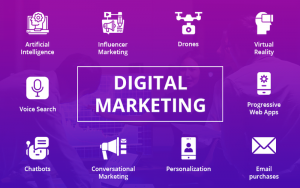Ecommerce SEO – Get Traffic to Your Online Store Top 4 Factors

Ecommerce SEO
Ecommerce SEO: Get Traffic to Your Online Store – Complete Guide
Ecommerce SEO is a vital element for any online store aspiring to capture organic traffic and drive conversions. Given the competitive nature of online retail, standing out in search results is crucial. Here’s a comprehensive guide to Ecommerce SEO:
Also Read:- How To Create Semantic Content Network? Ranking Websites on Google
1. Understanding Ecommerce SEO
Ecommerce SEO involves optimizing your product pages, descriptions, meta data, internal link structure, and navigational structure for search and user experience.
2. Why Ecommerce SEO is Crucial
- High ROI: Unlike paid advertising, the organic traffic driven by SEO is free, making it cost-effective in the long run.
- Trust and Credibility: Ranking high in search results builds trust with users.
- Sustainable Traffic: A well-optimized site can drive consistent traffic even without continuous expenditure.
Top Factors for Ecommerce SEO:
A. Keyword Research:
- Product-Focused Keywords: Use tools like Ahrefs, SEMrush, or Ubersuggest to find product-specific keywords.
- Long-Tail Keywords: These detailed keywords can drive specific, high-conversion traffic.
B. On-Page SEO:
- Title Tags: Incorporate main keyword and make it compelling.
- Meta Descriptions: Summarize the product and entice users to click.
- Image Optimization: Use high-quality images, optimize alt text, and ensure fast load times.
- URL Structure: Clean, descriptive URLs perform better and are more user-friendly.
C. Product Descriptions:
- Original Content: Avoid manufacturer’s descriptions. Write unique, persuasive copy that highlights benefits.
- Include Keywords: Naturally incorporate primary and secondary keywords.
D. User Experience:
- Site Speed: Use tools like Google PageSpeed Insights. Optimize images, leverage browser caching, and minify code.
- Mobile Optimization: Ensure your site is mobile-friendly, as a majority of users shop via mobile.
- Secure and Accessible: Use HTTPS and ensure that your site is easy to navigate.
E. Internal Linking:
- Link to Top Products: Showcase your top products by linking to them from the homepage or main navigation.
- Use Breadcrumbs: Breadcrumbs enhance navigation and help Google understand site structure.
F. Backlinks:
- Quality Over Quantity: Secure backlinks from reputable, related domains.
- Guest Posting: Write for niche blogs and industry news sites.
- Leverage Partnerships: Collaborate with manufacturers, suppliers, or complementary businesses.
G. Technical SEO:
- Schema Markup: Use schema to give search engines detailed product information.
- XML Sitemap: Submit an XML sitemap to search engines to help them index your pages.
- Avoid Duplicate Content: Use canonical tags to point search engines to the original content.
H. User Reviews:
- Encourage Reviews: They provide fresh content and help in rankings.
- Respond to Reviews: Engage with customers, address issues, and build trust.
I. Social Signals:
- Active Social Media Presence: Engage users on platforms like Facebook, Instagram, Pinterest, and Twitter.
- Encourage Shares: High-quality product images and shareable content can boost social signals.
By concentrating on the four most important ranking factors used to rank ecommerce websites. Obviously, I discuss all four of these aspects in the video.
However, I will also List them here for Your Reference.
First, there is the aggregate link authority of your website. This depends on the number and quality of backlinks pointing to your website. The fact is, the majority of ecommerce websites believe they can rank using only product and category pages. However, you cannot. As with any website, backlinks are crucial for ecommerce websites. I demonstrate how to create links to your ecommerce website at the start of the video.
The next step is product page optimization. Your product pages will likely receive the bulk of your organic search engine traffic. And I demonstrate the four steps I use to rapidly optimize product pages.
Once you have optimized your most essential pages, it is time to examine your site’s architecture. This is a more technical aspect of SEO, but it can make or break your ecommerce SEO efforts (since your site probably has hundreds or thousands of pages). Important is the organization of these elements (also known as your website’s architecture).
Conclusion:
Ecommerce SEO isn’t a one-time task; it’s an ongoing process. As search algorithms evolve, it’s crucial to stay updated and adjust your strategies accordingly. By focusing on user experience and quality content, combined with the technical nuances of SEO, you can drive substantial organic traffic to your online store, leading to increased sales and brand growth








